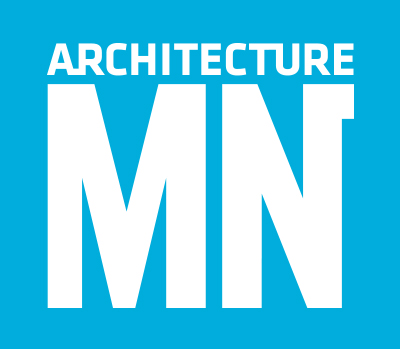As the fourth-most-expensive NFL venue ever built, how does the new stadium measure up as a facility, an experience, and a work of art? Seven points (touchdown!) to consider.
By Joel Hoekstra
Ranging in size from 75 to 95 feet tall, the five enormous glass-and-steel doors that compose the west entry to U.S. Bank Stadium, the new home of the Minnesota Vikings, finally swung open this summer to let gawking fans inside. After more than two years of watching construction progress on the 1.75-million-square-foot facility, members of the public finally had a chance to experience what team officials and stadium backers had promised for years: a Vikings game in a state-of-the-art sunlit stadium.
But even before the Vikings, clad in signature purple, sprinted onto the field, the team was counting the day as a victory. After more than a decade of lobbying for state financial support, years of wrestling with public committees over design details, and two seasons of play at a temporary location—TCF Bank Stadium on the University of Minnesota campus—the Vikings had finally taken up residence in their new home.
And what a home it is. Whatever you think of the $1.1 billion price tag, you can’t deny the place is impressive. It’s immense, and for many it’s an intriguing design. And even if you don’t like the look of the colossus, you can’t help but be wowed by the engineering and technology that make the unique structure possible.
“When the Twins built Target Field, they raised the bar for what people expect from a stadium,” says Lester Bagley, the Vikings’ vice president of public affairs. “So the pressure was on to make sure we delivered a beautiful experience. It really is, in my opinion, a work of art.”
POINT: THE ARCHITECT
In the 12 years it took to persuade the Minnesota Legislature to help fund the stadium, the Vikings had plenty of time to tour and assess other arenas. Team officials were particularly impressed with Lucas Oil Stadium in Indianapolis and AT&T Stadium in Arlington, Texas, both designed by Dallas-based HKS Architects. (The two NFL fields have retractable roofs.) “We felt HKS knew how to produce a great indoor/outdoor experience, as well as a tremendous fan experience,” says Bagley. HKS’ sports and entertainment division has also developed sports venues in Arizona, Mexico, and Canada.
POINT: THE AESTHETICS
The dramatically projecting western end of the stadium has drawn comparisons to the prow of a Viking ship, but HKS architect John Hutchings, AIA, one of the principals in charge of the project, says such references are incidental. The jagged rocks that formed the nearby cataract known as St. Anthony Falls and the ice shards that pile up on the edges of Minnesota lakes as they freeze, thaw, and refreeze in winter were the real inspirations for the structure. “Plus, it felt like Minnesota had the right cultural environment to appreciate modern architecture,” Hutchings says of the building, which is sheathed in enormous sheets of high-performance glass and acres of dark-gray zinc panels.
POINT: THE ROOF
A key driver to replace the old Metrodome (a.k.a. Mall of America Field) was the promise of outdoor games. There were early calls for a retractable roof, but making that idea a reality in a northern climate proved difficult: “You only want to open a retractable roof when the weather is perfect,” says Hutchings. “If it’s below 60 or above 85 degrees in Minnesota, your fans are going to be uncomfortable.” So HKS proposed a fixed roof constructed of ethylene tetrafluoroethylene (ETFE), a lightweight, transparent material that affords both daylighting and solar heating. “You feel like you’re outside, but you’re not exposed to the elements,” says Hutchings.
POINT: THE ENGINEERING
Snow load was a major concern from the start of the design process. HKS and contractor Mortenson Construction turned to famed engineering firm Thornton Tomasetti for structural engineering, and the team ultimately settled on a unique, single “ridge beam” approach inspired by Nordic roof designs. Shifting the central beam to the north side of the stadium increased southern exposure and, therefore, overall snow-melt capacity. (Giant gutters—some more than 50 feet deep—catch the runoff.) What’s more, using lightweight ETFE allowed the designers to eliminate 2,000 tons of steel from the project. Thornton Tomasetti also designed the giant doors on the stadium’s west entrance—said to be the largest in the world—which incorporate five of the building’s columns as pivot points and take five to seven minutes to open.
POINT: THE INTERIORS
Not surprisingly, purple dominates the interior of U.S. Bank Stadium. Most of the 66,200 seats that ring the field are purple, as are many of the fixtures in the arena’s 131 suites and six private clubs. The largest and most luxurious of the hospitality spaces is Mystic Lake’s 28,000-square-foot Club Purple, which features three types of seating and access to an outdoor deck with a fireplace. Rentals of such spaces for weddings, meetings, and dinners when the Vikings aren’t using the facility will provide additional revenue for operations. “The six premium spaces are all very different from one another,” says Shawn Gaither, AIA, whose Minneapolis firm, Studio Hive, partnered with HKS on the clubs and suites. “They give fans choices on where they want to engage with the game.”
POINT: THE TECHNOLOGY
Giant LED display boards mounted inside and outside the facility give fans the chance to view instant replays, referee conferences, player celebrations, and sponsor advertisements up close. Additional investments in cell-service boosters ensure that game-goers won’t experience a slowdown when they use their phones to send a selfie or to check Facebook.
Bagley says that, in addition to helping finance construction, the Vikings spent heavily on technology upgrades “to enhance the fan experience.” The team is developing phone apps for people who want to see instantly updated stats, for example, and it’s also looking into apps that would allow fans to order food and have it delivered directly to their seats. “We’re in competition with our fans’ couch back at home,” says Bagley. “We had to make sure the experience of seeing the Vikings play live in the stadium was first-class and fun.”
EXTRA POINT: THE CROWD REACTION
Not everybody loves the design, of course. And some people still question the decision to invest $1.1 billion in a sports facility where just a handful of NFL games will be played annually. Music lovers attending initial concerts in the facility—touted as another source of revenue—complained about the acoustics. And birdwatchers are still upset that the Vikings chose not to invest in glass that might lessen the building’s impact on migrating fowl.
But nobody misses the Metrodome. And Minnesota football fans have largely given the structure a thumbs-up after the first few games. Bagley says the Vikings believe it won’t be long before the stadium is widely embraced. The design of the building won over officials in charge of planning the 2018 Super Bowl, and U.S. Bank Stadium has also been chosen as the site of the NCAA Final Four in 2019.
“Our fans’ reaction will be the truest test of whether we’ve succeeded,” says Bagley. “They’ll let us know. Tickets for the first season are sold out, so that suggests we’re off to a good start.”
LOCAL PLAYERS
U.S. Bank Stadium’s three associate architects are all based in Minneapolis. Studio Hive partnered with HKS on the stadium’s premium hospitality spaces. Lawal Scott Erickson Architects worked with HKS on construction management. And JLG Architects served as the architect of record for the stadium’s building envelope, which includes the innovative ETFE roof. “I’m just fascinated by ETFE,” says JLG’s Linda McCracken-Hunt, FAIA. “It’s lightweight yet extremely strong, it sheds snow, and it makes you feel like you’re outside, in terms of the quality of light inside the stadium. Ours is the largest installation in North America, and I think it’s a product we’ll be seeing a lot more of in the future.”
U.S. BANK STADIUM
Location: Minneapolis, Minnesota
Clients: Minnesota Sports Facilities Authority; Minnesota Vikings Football, LLC
Architect: HKS Architects
Associate architects: JLG Architects; Lawal Scott Erickson Architects; Studio Hive
Structural engineers: Thornton Tomasetti; Chase Engineering; Palanisami & Associates
Mechanical engineer: ME Engineers
Civil engineer: EVS, Inc.
Construction manager: Mortensen Construction with Thor Construction
Cost: $1.1 billion
Size: 1.75 million square feet
Completion: August 2016

